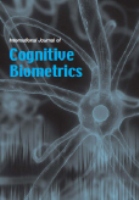Kenneth Revett, the academic editor of the International Journal of Cognitive Biometrics (IJCB), has reviewed cognitive biometrics in the inaugural issue of the journal. The novel approach is an alternative method for user authentication.

Unique anatomical characteristics form the basis of identification through palm, fingerprint, iris and retina scans. The cognitive biometrics approach makes use of nervous tissue response. It depends on a person’s response to a specific stimulus such as a Rorschach ink blot, a puzzle, song or photo that is quite familiar. The stimuli draw out responses based on persons’ genetic predispositions, which have been influenced by personal experiences.
Various types of techniques, such as electrocardiogram, electroencephalogram, blood pulse volume, electrodermal response, electromyogram, hemoencephalography, pupilometry, near-infrared spectroscopy may be used for acquiring the response. This response is then matched with a previously recorded EEG, ECG or other similar data.
Revett, at the British University in Egypt, stated that cognitive biometrics has the ability to provide a robust, user-friendly and intuitive authentication protocol for continuous and static authentication. When combined with mouse, keystroke dynamics, or other similar techniques, the security of the authentication technique will increase.
The inaugural issue also contains papers on issues associated with cognitive biometrics implementation, user and security adoption and other problems. Deployment, generalization, persistence, and data acquisition are other factors that have been dealt in the papers.
This stimulus-response methodology will help authenticate the person effectively when appropriate stimuli are provided.